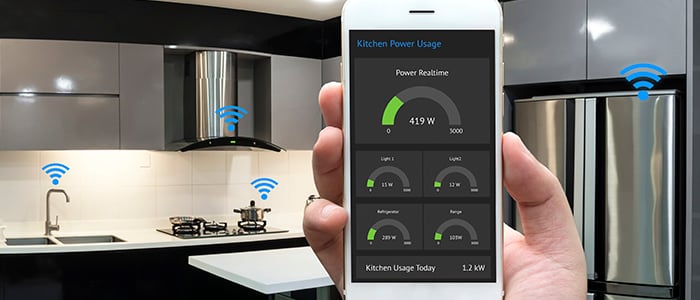
Smart device use is on the rise, creating an increased need for updated service methods.
If it feels like smart home devices are everywhere, you’re not that far off. Today, more than a third of U.S. homes are using them, and by 2023 that number will jump to more than half.
The rapid rise of these constant companions can be attributed to more than just novelty – smart devices provide everyday convenience for Americans who find themselves increasingly strapped for time. Even more than that, many consumers are increasingly reliant on smart devices—products like smart cameras, thermostats, smoke detectors, and even locks—to provide comfort and safety.
This raises the question: with so much of their lives tied into the successful operation of these devices, are smart device owners adequately prepared should one fail?
Beyond Classic Service Contracts
In the past, consumers looking for protection in the event of device damage or malfunction would tack on a trusty service contract—and that typically got the job done. When a device went on the fritz, the customer would simply call in a claim, verify eligibility, and schedule a service visit.
Today, however, given concerns about connectivity and the complexity of smart devices, consumers need more than traditional service contracts can offer. That’s why many manufacturers are including self-diagnostic capabilities in these new devices, allowing the servicing entity to understand—and possibly remotely solve—the problem before sending out a technician.
It’s a terrific feature that saves consumers and administrators time and money. But with so many bells and whistles, smart devices still present a number of challenges.
The Smart Device Scramble
Connectivity, integration, malfunction, security – all are big concerns as smart devices and IoT become more common. Distilled, it’s really a numbers game: more manufacturers are making more IoT-connected devices; these devices are becoming more specialized. As more specialized devices enter the market, manufacturers attempt to match competitors and send newer devices to retailers without the benefit of proper field testing for function or security. And consumers, many none the wiser to the aforementioned, continue to bring more devices into their homes, introducing additional variables and requiring greater connectivity.
With the expectation that manufacturers will continue to roll out not-quite-ready-for-primetime products as quickly as possible in an effort to create the next big hit, who bears the burden of protecting consumers and their experience?
Tech Support Saves the Day
Offering a range of service assistance for advanced technology products, tech support can help bridge the gap between today’s smart devices and traditional service contracts. A number of companies are realizing this and adding this service feature to the mix, employing dedicated tech support teams that can handle issues from installation frustrations to everyday connectivity questions. In short, solving the problems that can prevent consumers from using and enjoying their pricey new products.
As device complexity increases, the challenge of how to support them will increase concurrently. Service providers will need to understand the innerworkings of numerous devices and how they interact with one another and consumer home networks. By coupling a tech support option with the reliability of classic extended service contracts, companies can mitigate these early smart device struggles and provide a path to a better user experience.



